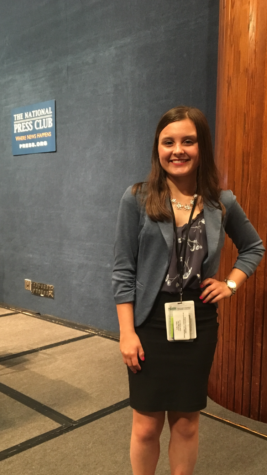Course Selection Changes at SBRHS: Constructive or Counterproductive?

May 13, 2017
In school years’ past, students feverishly scribbled down their classes for the next year on a brightly colored paper and crumpled it in the bottom of their backpacks while staff members anxiously attempted to meet all of their students’ course requests.
This year major changes were made, both to the way the courses were chosen by students as well as the courses themselves. Starting this year, students at Somerset Berkley chose their courses online instead of going through the chaotic and disorderly process of choosing classes on paper. Mr. Lanczycki, the principal of Somerset Berkley Regional High School, stated that the reason for the change was to “be more efficient” because the pen and paper selection process took too long.
Students were emailed a video of science teacher and software applications manager Ms. Paskowski describing how to access the course scheduling file on their Aspen account (a grading system students and teachers use). Each grade level was assigned a different week in which they were allowed to choose their courses. The courses available to each student were tailored to the individual’s grade level and the courses that he/she completed already in his/her high school career.
Teachers were able to select courses for their students if the student was going to take a certain class, for example, an Advanced Placement class. Although the students were only allowed to choose a certain number of electives and classes, therefore allowing no room for variation of students’ schedules, a meeting with each student’s guidance counselor soon followed.
Mr. Lanczycki says the new online course scheduling system is useful because it prepares students for the way course scheduling will be done in college. Because the computerized course selection system creates less of a hassle for students and staff, an easier transition is expected at the beginning of the 2017-2018 school year.
Mr. Lanczycki says that the transition to an online course selection system has been in the works for a while now: “there had been whispers in the old building but we didn’t have the technology and the capability to do that.” Instead, students and staff took small steps, first using the online grading system MMS and finally transferring over to Aspen. “I think if we had done it all at the same point,” says Mr. Lanczycki, “there would have been problems.”
The courses that will be available to students next year changed as well. For example, the English classes that were available to juniors and seniors in the past were removed. While upperclassmen had the option to take British Literature, Creative Fiction and Nonfiction, Comparative Mythology and Folklore, Classical and Modern Drama, and Science Fiction and Fantasy in Print and Non-Print Media if they did not wish to take an Advanced Placement English class (either AP Language and Composition or AP Literature and Composition), these options are no longer present. Instead, if juniors or seniors do not want to take an AP English class, they must take Level 1 or 2 World Literature.
Hannah Hultman, a junior at SBRHS, thinks the changes to the English courses are unfair. “It limits the aspect of choice because a lot of students enjoy English the most,” says Hannah, “and the fact that they can’t choose, it limits those students who want to go into English.” She also believes that the elimination of some of the English courses “gets rid of the fun in English” because making the Level 1 and Level 2 classes more general would force students to focus on areas of study that they do not like — something which Hannah thinks is less likely to happen if students have the opportunity to choose.
Dr. Doucette, the Content Coordinator of the English Department, says the main problem with the variety of English courses that were available in the past was that “if students don’t get their first choice, where do they move?” This presents a major problem for both students and staff if students have other conflicts with their schedule which would prevent them from receiving the English class of their choice. However, Dr. Doucette ensures that students will still have some aspect of choice, although the variety of classes available to students may decrease: “As long as everyone knows that these are the skills you’re going to learn, these are the types of readings we are going to be able to respond to…we can make it work if there are students interested in certain topics, like Science Fiction and Fantasy or Drama.”
Dr. Doucette wants to make sure that students understand that no classes have been “cut” because the skills, ideas, and topics that were in each of those courses will be present in the World Literature classes in some form, depending on which students are in the class. He hopes that “we can produce a better and more interesting curriculum for students next year.”
Besides the changes made to the English program, the Wellness program at the high school has also undergone major transformations. Classes such as Food, Nutrition and Consumerism, Culinary Essentials, and Mind Body Wellness will no longer be available to students next year. Mr. Lanczycki says that these cuts in classes are related to the economic problems that the school faces, which will cause cuts in both classes and staffing for the Wellness program in the future. He explains that the sudden cuts in classes in the Wellness program is a result of the growing size of incoming classes, which therefore requires more sections for Health — a requirement for freshmen and juniors to complete for graduation. Because Mr. Lanczycki says that SBRHS only has so many teachers that can teach Health, the Wellness electives have disappeared in order to “make sure those classes that are requirements are covered.”
On the other hand, SBRHS junior Erin Tremblay planned on taking Creative Writing and Culinary Essentials before the changes to the courses for the 2017-2018 school year were made. Instead, she is now taking Graphics and Digital Photography. Erin says that the cuts made to the classes both surprised and disappointed her. “I felt cheated out of the classes I had been looking forward to since I was an incoming freshmen,” says Erin, who feels upset that she waited for the last three or four years to take these courses that are now out of reach.
Another major change has occurred in the Art Department. In the 2017-2018 school year, introductory art courses have been changed to three credits instead of six credits. This change affects students’ course scheduling throughout the years as students need six art or music credits to graduate. Decreasing art courses to three credits for each introductory class requires students to take more than one art course to meet the requirements. However, some new courses have been added as well, including Advanced Textile and Fashion Design and Explorations in Art.
Mr. Lanczycki says that the decreasing the amount of credits available for each introductory art class will hopefully serve to prompt students to try other courses and gain more exposure to other types of art.
However, Hannah Hultman, who took Ceramics, Art Foundations, and Digital Photography, thinks that the changes to the Art program are “upsetting” because she believes it will be hard to incorporate all of the work that students complete in introductory art courses into classes that meet only three times per eight day cycle. “The introductory courses are important to many students because they cover all aspects of art,” says Hannah. Taking Art Foundations her freshman year made her want to delve further into art. She feels that these changes to the Art Department will prevent people from developing this relationship with art in the high school because of the infrequency of the times the introductory art courses meet.
However, there has also been additions to the Technology Department. With the construction of the school’s new television studio, courses focused in production, editing, and communication skills have been introduced for the 2017-2018 school year. For example, TV Media Production was added to the available courses for next school year.
Overall, opinion about the new courses available to students next year is relatively divisive among students and staff. However, Mr. Lanczycki states that these are just changes that “have to happen and that we have to adjust to.”


